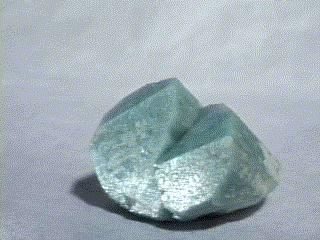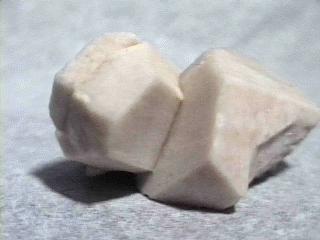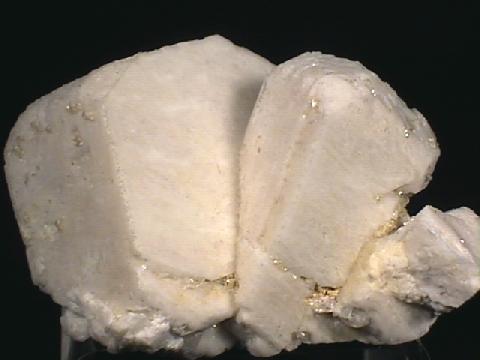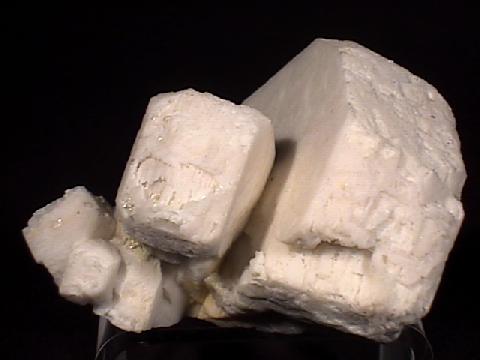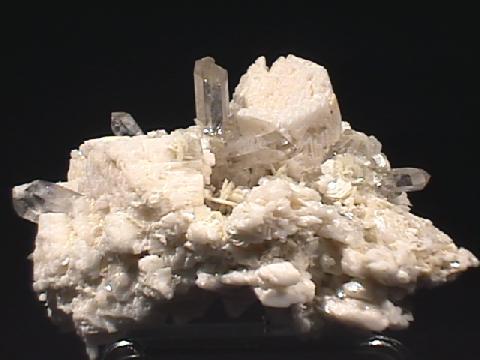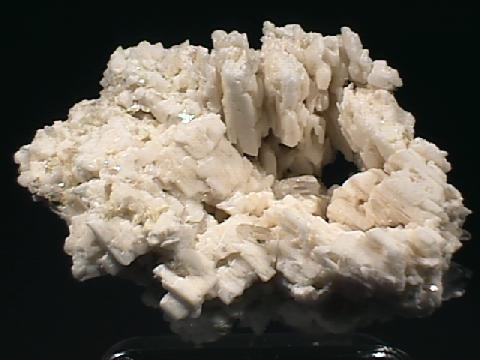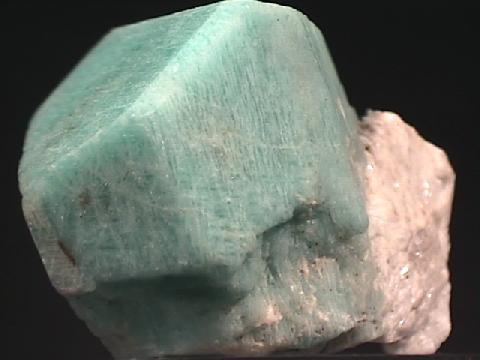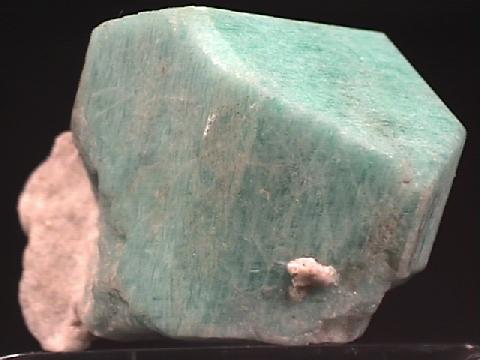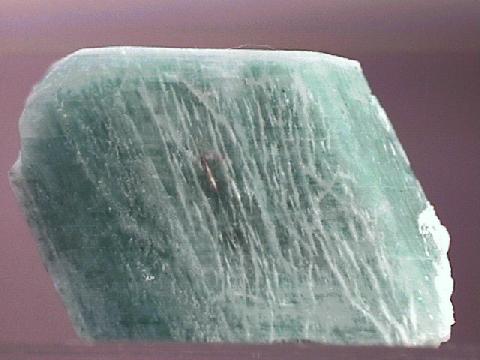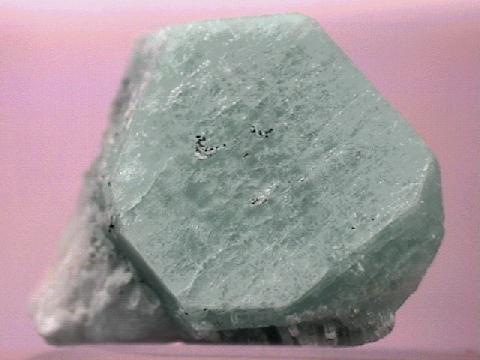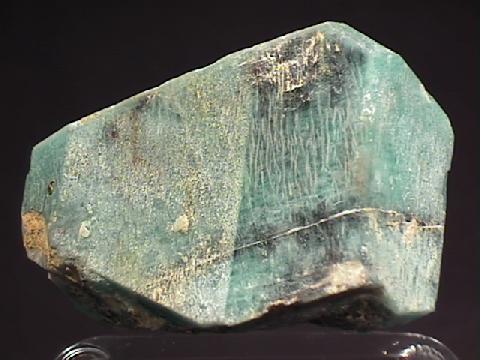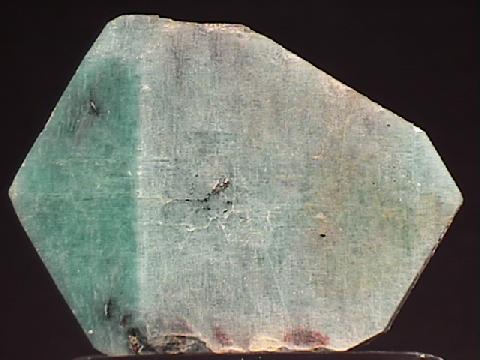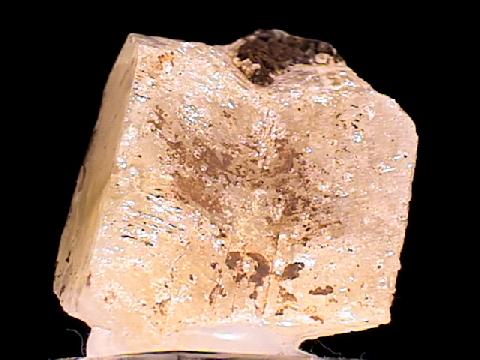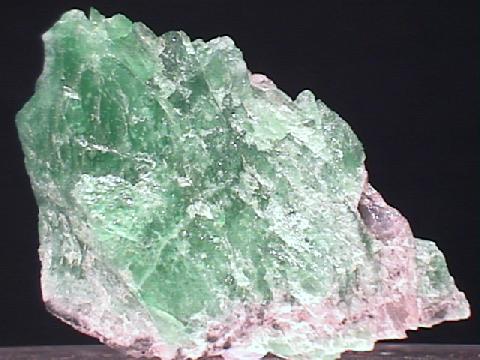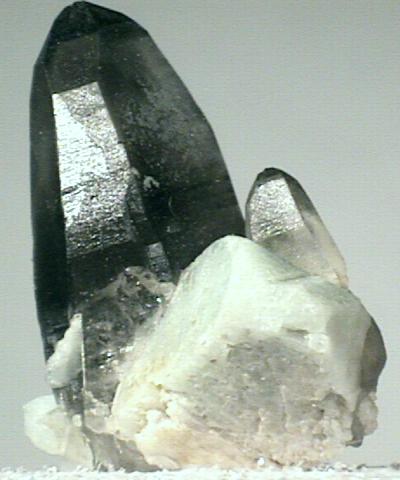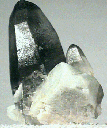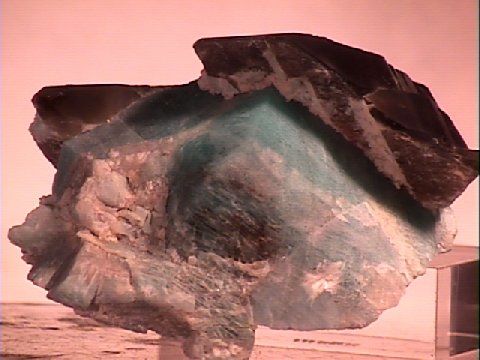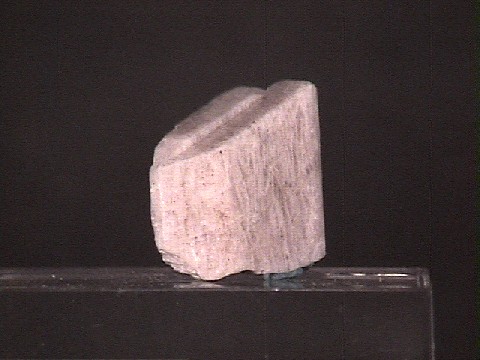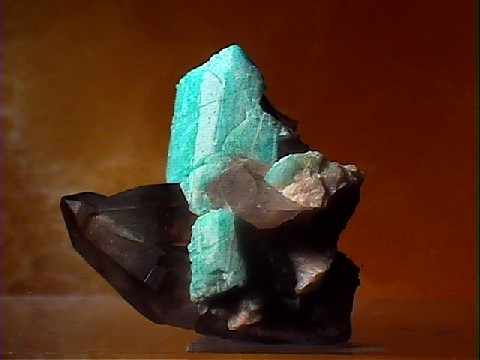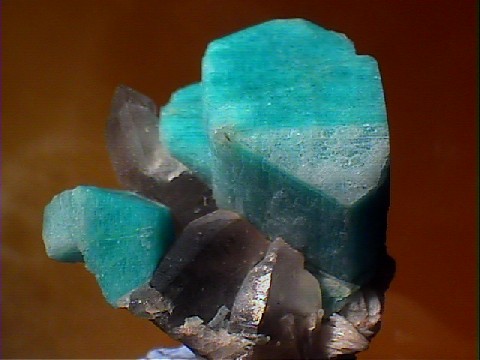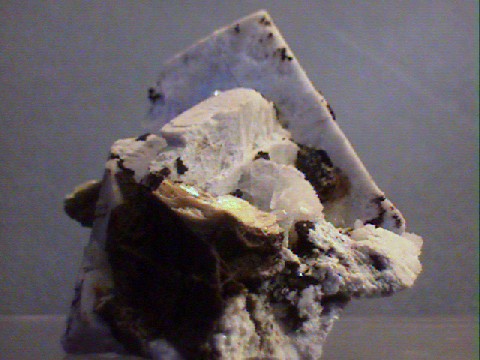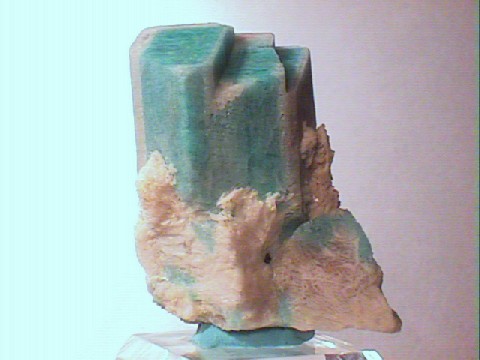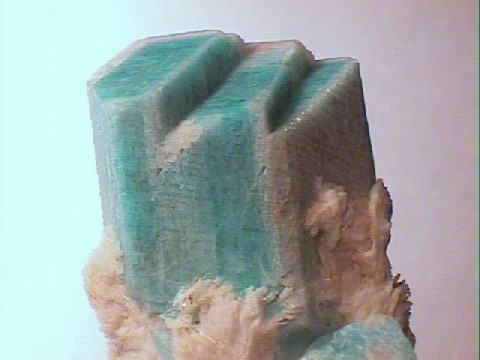 The Mineral MICROCLINE
The Mineral MICROCLINE
- Chemistry: KAlSi3 O8 , Potassium aluminum silicate.
- Class: Silicates
- Subclass: Tectosilicates
- Group: Feldspars
- Uses: ornamental stone, in the manufacture of glass, enamel and porcelain products and as mineral specimens.
Specimens
Microcline is a common, but not a well known mineral and has been used as a semi-precious stone under the names of Amazonite and Perthite. Amazonite is a variety that is deep green and is suitable for carving and polishing. The perthite variety is a stripped, veined or almost zebra patterened stone, that is produced from lamellar intergrowths inside the crystal. These intergrowths result from compatible chemistries at high temperatures becoming incompatible at lower temperatures and thus a seperating and layering of these two phases. The colored stripes are microcline and the white or clear stripes are plagioclase feldspars. If there is more plagioclase than microcline it is called "antiperthite".
Microcline is a polymorph of other minerals that share the same chemistry but have different crystal structures.
If positive identification can not be made by field methods then the specimen may be refered to as a potassium feldspar or K-spar.
The other k-spar minerals are sanidine,
orthoclase and
Twinning is common in all feldspars and follow certain twin laws such as the Albite Law, the Pericline Law, the Carlsbad Law, the Manebach Law and the Baveno Law. Albite and pericline Law type twinning produce stacks of twin layers that are typically only fractions of millimeters to several millimeters thick. These twinned layers can be seen as striation like grooves on the surface of the crystal and unlike true striations these also appear on the cleavage surfaces. Albite and pericline twinning is more common in plagioclase feldspars than with microcline. The Carlsbad Law twin produces what appears to be two intergrown crystals growing in opposite directions. Two different twin laws, the Manebach and Baveno laws, produce crystals with one prominant mirror plane and penetrant angles or notches into the crystal. Single crystals showing a perfect twin are rare and are often collected by twin fanciers.
Well formed crystals can be quite striking in appearance. At some localities fine amazonite clusters are intermixed with smoky quartz crystals and this results in an outstanding classic mineral specimen.
PHYSICAL CHARACTERISTICS:
- Color is usually off-white,yellowish, flesh pink, brown or green.
- Luster is vitreous to sometimes pearly or dull if weathered.
- Transparency crystals are translucent, but usually translucent to opaque.
- Crystal System is triclinic; bar 1
- Crystal Habits include blocky, or tabular crystals. Crystals have a nearly rectangular or square cross-section with slightly slanted dome and pinacoid terminations. Twinning is common. Crystals can be twinned according to the Albite, Pericline, Carlsbad, Manebach and Baveno laws. Microcline can be found as a major rock forming component in granites, syenites and in metamorphic gneisses.
- Cleavage is perfect in one and good in another direction forming nearly right angled prisms.
- Fracture is conchoidal.
- Hardness is 6 - 6.5.
- Specific Gravity is approximately 2.5 (average)
- Streak is white.
- Associated Minerals are quartz, muscovite and plagioclase feldspars.
- Other Characteristics: Lamellar twinning may cause a grooved effect on cystal and cleavage surfaces that appear as striations. Perthite intergrowths causes a stripped appearance is some specimens.
- Notable Occurrences include Pikes Peak region of Colorado and North Carolina among other sites in the USA; Russia; Norway and Madagascar.
- Best Field Indicators are occurence, twinning, color and luster.

